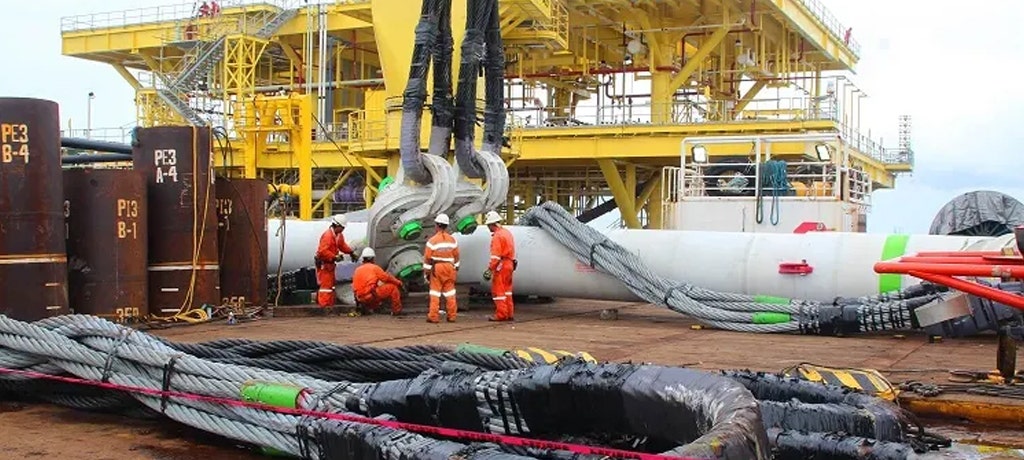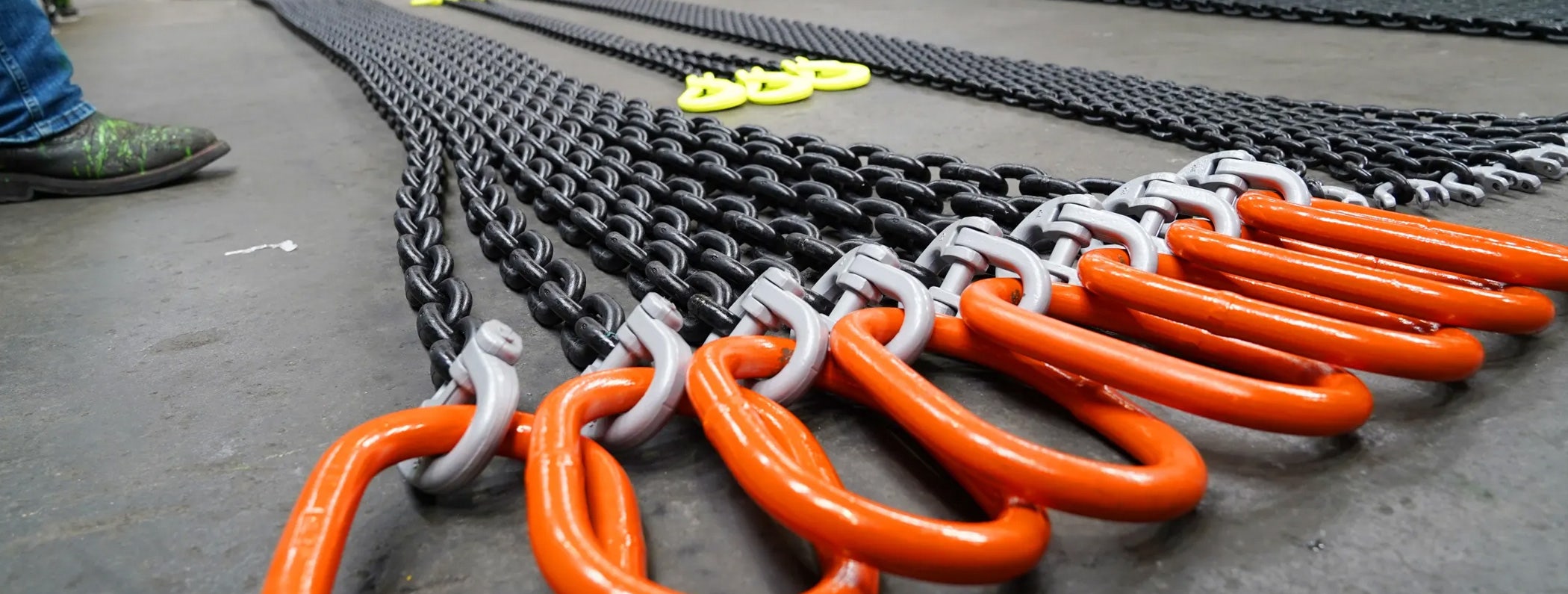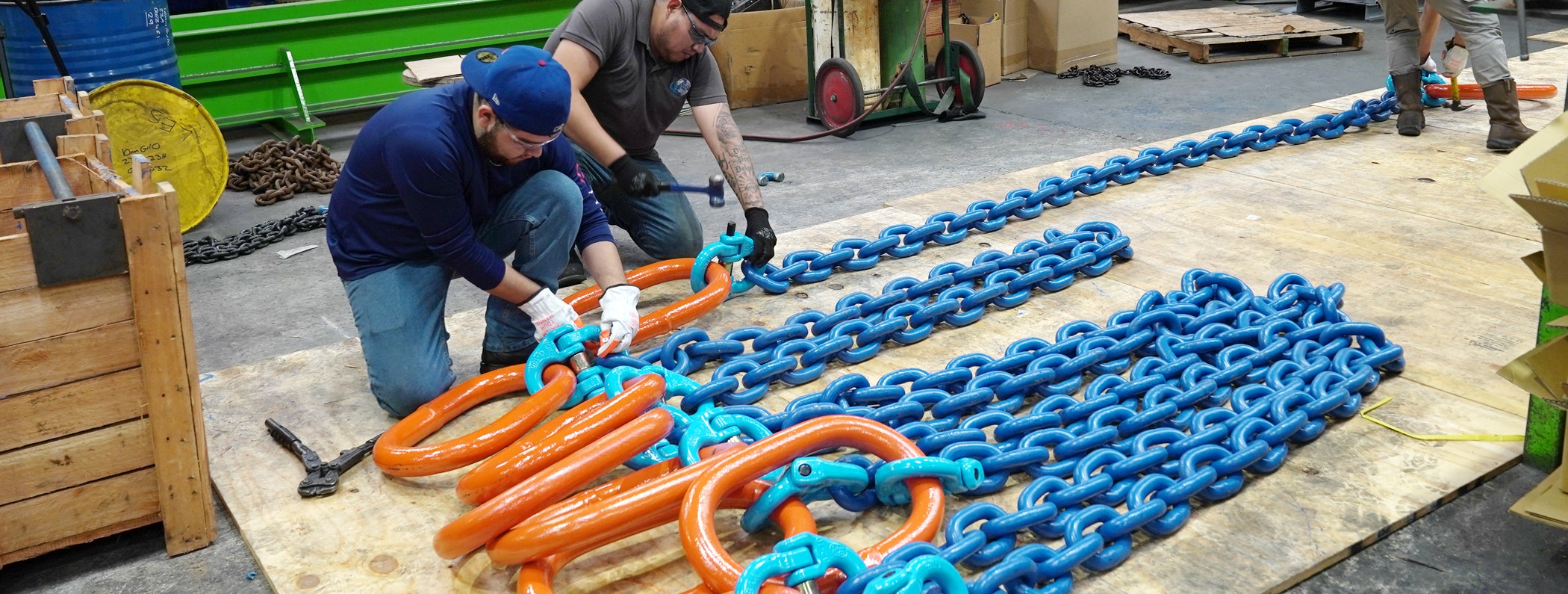How to Feel Confident That You’re Using the Best Rigging Equipment Available

Choosing the right rigging equipment isn’t just about getting the job done well. It’s about picking equipment that will keep your products, employees, and worksite safe. It’s a big decision – and one that no lifting professional should ever take lightly.
Unfortunately, many businesses don’t really know what kind of lifting equipment they need. There are more than 125,000 cranes in operation today, which means there are plenty of places in which the risk of lifting accidents is high.
Between picking different lifting shackles, chains, wire rope slings, and more, it’s easy to select products that do the job, but not well. You should feel confident that you’re using the best rigging equipment available.
Additionally, OSHA requires that your rigging equipment meet certain guidelines that help keep employees safe. Using subpar rigging products is a quick way to earn a hefty fine.
Today on the Holloway Houston Inc. blog, we want to give you some tips for picking the best lifting equipment and products for your job site. As we go through the necessary steps, you’ll begin to understand just how vital it is to pick the perfect tools for every project.
Start By Assessing What You’re Lifting
The first question you’ll need to ask yourself is, “What objects are we regularly lifting or rigging?” This helps you understand what kind of lifting equipment you need – and which products just won’t cut it.
In order to safely lift or move any load, you need to know:
- The weight of the load (and its center of gravity)
- The weight of the rigging hardware
- The capacity of the hoisting device
- The rope and sling’s working load limit
According to the Journal of Transportation Technologies, up to 80 percent of crane accidents take place when the operation is beyond the crane’s capacity. Another 90 percent of crane accidents are the result of human error – which could include miscalculations or a lack of research beforehand.
Understanding these numbers will help you pick rigging equipment that is properly weighted and matched to the loads you work with. If you aren’t entirely sure about your rigging equipment’s capabilities and weight, you increase the risk of work-related accidents and injuries.
Not sure how to find this information on your rigging equipment (or the products you’re thinking about buying)? Ask the manufacturer or the supplier.
Think About Where You’re Working
Another way to feel confident that you’re using the best rigging hardware is to consider your environment before making any big purchases.
Most lifting industry newbies are surprised to learn just how dramatically temperature changes and weather can affect rigging materials. For example, any items with a metallic core will not operate in conditions above 400 degrees Fahrenheit, which might limit some projects.
Thoroughly define where you’ll be lifting and moving loads, then evaluate weather conditions. Ask yourself questions like:
Is there an ocean nearby, causing saltwater abrasions? Do temperatures drop below freezing? How much sunlight will the objects be exposed to? Is the ground level or slanted?
If you’ll be facing harsh winds during your project, you’ll need to pay special attention to your rigging equipment. Equipment and/or loads with large wind-catching surfaces can easily swivel out of control, which means you’ll need products that are built specifically for windy conditions.
Similarly, you’ll need to consider the visibility of your rigging crew. Will it be impaired by fog, snow, rain, darkness, dust, or other elements? If so, you’ll need to research the best rigging equipment for these low-visibility conditions.
Never assume that one rigging product is versatile to face all weather conditions and environments. When in doubt, talk to lifting hardware professionals who can guide you toward tools created just for your type of work.
Learn What Quality Looks Like in Rigging Supplies
Last but not least, as you evaluate your rigging hardware, remember that price isn’t the only indicator of quality.
All lifting tools see a lot of wear and tear. They’re used in high-energy, high-impact projects, which means they need to be incredibly durable to last for more than a few jobs. Therefore, quality is key – and price tags aren’t always great indicators of quality.
Don’t assume that the best products are the most expensive or that economic options are safe choices. Instead, do research that extends beyond obvious costs. Ask yourself:
- What do reviews look like for this product and its manufacturer?
- What materials is the tool made of?
- Are the materials up to today’s harsh rigging standards?
- What kind of maintenance and care will this product require to last for many years?
If you ask our experts, they’ll tell you that rigging equipment certainly isn’t a category you want to cheap out on. Inexpensive (poor quality) equipment may lead to accidents, injuries, damages, and even fatalities. The savings upfront are never worth the long-term effects.
Our recommendation is to shop with equipment suppliers that are well-known for selecting high-quality products to sell. The more stringent they are about the tools they offer, the more likely they are to offer the best of the best.
Because durability is so important in lifting and rigging, you’ll want to look into lifetime guarantees and warranties from manufacturers. With proper maintenance and inspections, you’ll want to feel confident that your pricey purchases are worth the financial investment.
For additional help understanding quality standards for different rigging tools, click here.
In Conclusion
Don’t make any assumptions when it comes to your rigging equipment selections. Do your research to double-check quality, pricing, durability, and fitness for your workplace.
At Holloway Houston Inc., we strive to provide superior lifting products and services to markets around the globe. Our commitment to quality ensures that we only sell and advertise products we stand by. We prioritize the best materials, manufacturers, and abilities in every tool we offer, including:
- Wire ropes
- Rigging slings
- Alloy chains
- Crosby fittings
- Rigging attachments
- Fiber ropes
Do you need help determining what the best rigging equipment is for your specific needs? Turn to our experts today. We’re staffed by more than 200 professionals, all of whom are dedicated to meeting the needs of industrial lifting clients from various countries.
We’ll guide you toward the perfect tools for your environment and job. To get in touch, call 713-674-8352 or reach out online. We look forward to hearing from you soon!
Shop Online Rigging & Lifting Slings















